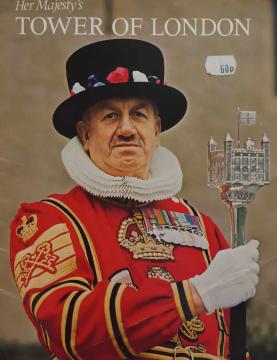
Her Majesty's Tower of London
The Tower of London is a medieval fortress that forms one of the central points of the city and is located on the eastern edge of the historic center of London along the very north bank of the River Thames.
The central part of the Tower of London, the White Tower, was built by the English king William the Conqueror in 1078, primarily with the task of a defensive fortress that was supposed to protect the Norman conquerors of England from outside invaders but also from the population of London. It was built of stone imported from France based on the plans and under the supervision of the Frenchman Gundulf, Bishop of Rochester. In the 12th century, the English king Richard I the Lionheart had the fortress surrounded by a defensive wall and a moat, and the moat was completely completed and made useful by King Henry III. who at the same time made the fortress, by building accompanying buildings, the largest royal palace and residence at the time. The construction of the entire complex was completed by the English king Edward I in the 13th century. During the Hundred Years' War, the French grandee Charles, nephew of the King of France, was also imprisoned in the Tower of London, as shown in this painting from the 15th century. This is the earliest depiction of the Tower of London, showing the White Keep and the Watergate. However, the Tower of London is much more famous for its function as a prison, torture and death place for high-ranking royal prisoners and opponents, most of whom were important figures in English history, such as: the English king Henry VI. and his wife Margareta, brother of King Eduard IV. George, King Edward V. and his brother Richard, the second wife of King Henry VIII. Anne Boleyn and her sister Jane, the fifth wife of Henry VIII. Katarina Howard, Queen Jane Gray and many others. Until the middle of the 20th century, the Tower of London was used for military purposes and as a prison for some important prisoners. It is interesting that one of the last prisoners of the Tower of London was Nazi official Rudolf Hess, who was imprisoned here for four days in May 1941. Today, the crown of Queen Elizabeth II is kept in the Tower. and royal jewels. The tower is secured by an elite group of guards (founded in 1485), the so-called Yeomen Warder or Beefeater (who got their second and more popular name because in the past, at a time when it was a rarity, they were fed quality (beef) meat). Today, these guards, in addition to guarding the building itself, also perform the duties of tourist guides. In September 2007, for the first time in the history of the service, a woman was employed as a guard. Another curiosity is connected to the Tower, namely the ravens that have settled in the fortress and have been there for centuries. Currently there are eight of them and each of them has its own name. In the people themselves, the expression "to be sent to the Tower" meant to be arrested and imprisoned.
One copy is available





